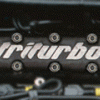Leaderboard
Popular Content
Showing content with the highest reputation on 08/09/14 in all areas
-
7-Jan-2015 Tech Inferno Fan>> originally it was thought that this configuration would provide 32Gbps of performance. Unfortunately that is not the case due to the Thunderbolt chip being hosted off a x4 2.0 bus, limiting performance to 16Gbps as noted. I'm excited to unveil the first ever (to my knowledge) eGPU SLI configuration. 2x 780 Ti's + 2x Sonnet SEL's running on a 2013 MacBook Pro. This was thought to be impossible, in fact Nando and I were certain it was a lost cause, but I was determined to prove otherwise. Thousands of dollars and months later, it happened.There are a number of factors that went into making this possible. The combination of hardware is the most important. The other key ingredients include software and a particular boot process that until discovered almost put an end to the whole project. As much as I would enjoy keeping this information to myself, I will happily disclose everything I know for any other lunatics out there that want to create the ultimate eGPU solution.Configuration:2013 13" MacBook Pro (15" preferred) *Iris-only graphics required!2x EVGA 780 Ti (Any matching EVGA GTX cards should work)2x Sonnet SELCorsair RM450 PSU w/2x 8pin to 8+6pinWindows 8.1External display (Optimus is not an option with SLI)*Secret step for SLI (revealed below)*Secret boot process (revealed below) – Performance Results – 3DMark 11SLI Graphics score: 22095 linkSingle 780Ti score: 125763DMark - Fire StrikeSLI Graphics score: 19395 linkSingle 780Ti score: 104103DMark06*Older benchmarks would not run with both GPUsGamesAlmost every game experienced CPU bottleneck on the 13" MBPThe above benchmarks provided static rendering and thus realistic SLI results*Please do not request benchmarks on specific games, I do nothave a 15" Iris-only MBP to give you a legitimate GPU-centric result,however, just like the benchmarks, I'm confident the results would be impressiveCUDA-Z Bandwidth (TB Device 1 and 2)Host to Device: ~1250 MiB/sDevice to Host: ~1360 MiB/sDevice to Device: ~135 GiB/s– The Secret Sauce –1. HyperSLI 1.0 (installation is simple, adds a boot option)2. Boot process:- Shutdown (not a restart)- Unplug TB cables- Wait 10 seconds- Plug in TB cable #1- Wait 10 seconds- Boot Mac and hold alt- Wait 5-10 seconds- Plug in TB cable #2- Select Windows and choose HyperSLI boot option- Should work! Open Nvidia Control Panel and enable SLI– Limitations –- CPU. 15" w/maximum quad-core CPU will provide the best SLI performance- Games that require more CPU will experience capped FPS quickly- GPUs in SLI crunch massive amounts of data @32Gbps and low-spec CPUs will not keep up- MBPs w/Iris-only graphics is required. MBP w/discrete GPU + 2 eGPUs will not boot or will result in a Code 12- External display required- Optimus is not an option. Believe me, I tried1 point
-
I asked Prema about the 780m's and yes he told me they would be plug and play. My P377SM barebones is coming on Monday and I'll be putting GTX 780m's in them. As it happens though, I am flush with 780m's (I have somehow ended up with 4 of them) and I have a pair of spares should you wish to buy some.1 point
-
No you do not change the bios on the cards! They will work without any extra effort. Also the p377sm has better cooling than the aw18 due to the aw18 bios not ramping up the fan speed like it should as parts get hot. There is something physically wrong with your laptop if the gpus are overheating.1 point
-
I seriously doubt that they haven't soldered the connector, yet everything else "is there". I'm pretty sure there are some capacitors and resistors missing as well. You'll have to have the schematics, but it's pretty new model, so I doubt it that you'll find it. Good luck anyway!1 point
-
pebcak (overclock unstable: more volts or lower core Mhz, or lower memory Mhz, voltage setting does not affect memory stability but just affects the core).1 point
-
I actually was just having the exact same problem a couple minutes ago. Open biosfixer and drag the bios into the window of the program.1 point
-
If you increased your RAM then please run c:\eGPU\eGPU-setup-mount, followed by v:\devcon\mkdevcon.bat to create a new devcon.txt file with boundary info. If you've tried the PCI Reset Delay and still are getting error 43/12 then please contact me Tech Inferno [email protected] to discuss further. It's was listed, then pulled and looks like is now available for purchase again. Since nobody got their hands on one there's no feedback. It's the first BPlus adapter to introduce a CLKRUN delay hardware jumper, a socketted Gen2-capable cable (on the eGPU adapter end), and includes a Dell DA-2 AC adapter that can drive up to a GTX760/GTX680/GTX560Ti. Based on the specs it looks good.1 point
-
Stick to AHCI and NO RAId. I tried RAID on my two 1 TB Samsung 840 EVOs, yeah good benchmarks, but usage wise, you will not notice on bit of a difference, only the added hassle in updating firmware and managing your drive: [h=1]Samsung 840 Evo 1TB RAID vs. RAPID Benchmarks[/h] So here are benchmarks of my two 1 TB Samsung 840 EVO SSDs, both in RAID 0 and in RAPID. The 4K speeds are horrible in RAID 0 AS SSD Benchmark with IRST 12.9.0.1001 in RAID 0 (W8.1) AS SSD Benchmark with IRST 12.8.0.1016 in RAID 0 (W8.1) Not very happy to be honest. those 4K speeds are horrible Previous benchmarks with RAPID, 4K is way better: AS SSD Benchmark with IRST 12.9.0.1001 (W8.1): AS SSD Benchmark with IRST 12.8.0.1016 (W8.1) ========================================== Windows 7 Benchmarks: AS SSD Benchmark with Intel Chipset Drivers 9.4.0.1027 (W7) [RAPID] AS SSD Benchmark with IRST 12.0.7.1002 (W7) [RAPID]1 point
-
Hi there! I am using a RAID 0 ssd setup in my own rig, just to get a few things out of the way: 1) RAID 0 scales almost liniar with ssd's, als long your motherboard and CPU can keep up, you'll almost double your performance. 2) SSD's are rock solid, even after using my 2*120 GB Corsair Force GT drives alot daily, it's still 100% functional. 3) Even though the performance goes through the roof with a raid 0 setup... You won't really mention the diffrence. Unless you're going to benchmark to see how fast your RAID 0 really is, it feels exactly the same as 1 SSD. The best option is to have 1 big SSD and have your main OS installed on it, so that be BIOS can be on AHCI instead of RAID. That way you'll keep the TRIM enabled and, needless to say, that way you will not lose performance over time. My advice: If you really want just a tad faster loading speeds with big files, shoot for RAID 0, otherwise you could keep yourself away from the hassle of RAID and al the driver issues that may go with them.1 point







